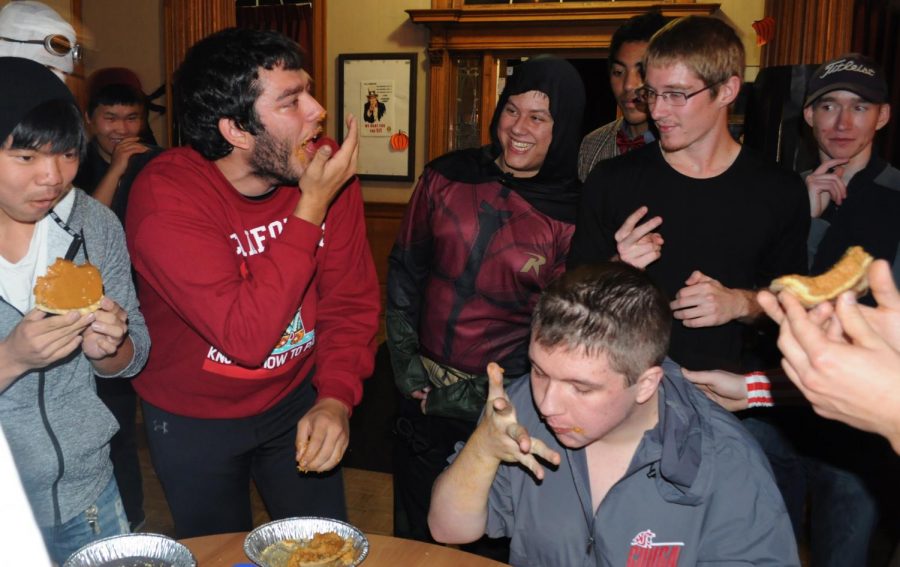How to thrive in dorms
Students should consider what experience they want from residence halls
Students participate in a pumpkin pie eating competition at Stimson Hall’s annual Rocktoberfest party.
January 25, 2018
Living in a residence hall can provide many opportunities for students who know how to take advantage of them. Many halls on campus have themes or focuses that are tailored to certain interests and supplement student involvement in the university. Being conscious of these and other unique benefits can help students modify their living experience to get the most out of their choice.
Many students choose their residence halls based on proximity to activities or locations they already interact with. Location matters on a large campus, and WSU has a variety of residence halls that help bring students closer to the places that matter to them.
“First and foremost it is important to figure out, what do you want out of that experience? Where are your classes going to be?” said Kate Gannon-Cullinan, assistant director of Residence Life. “I think the best benefit to living on campus is the convenience factor.”
Not only is location important, but the themes of residence halls also offer important distinctions between the various communities.
“Every residence hall has pros and cons,” said Tiffany Firestone, residential education director at Gannon-Goldsworthy Hall. “You’ll notice a lot more science majors living in a certain area because it’s closer to their science classes. Athletes tend to live closer to the athletic complex.”
Stephenson Complex, for example, has a focus on programming for STEM majors. Students looking to hone in on that path often opt for this hall to be a part of a community that shares similar majors, career goals and interests.
Stephenson is also close to the popular Flix Market, an RDA-friendly sit-down dining location that serves burgers and shakes until midnight. The market also sells drinks, snacks and Ferdinand’s products from the small grocery store that makes up half of the facility.
On the north side of campus is Streit-Perham, a hall that offers programming to help students develop a plan on how to live a healthy lifestyle. Its location near the Student Recreation Center and athletic facilities make it easy for students who participate in sports or just want to be physically active to utilize those services on campus.
According to the age of the building and the type of room a student chooses, the cost will be different. This is another factor to consider when choosing a room. Cost can be everything when it comes to higher education. If a student wants to save money, there are residence halls that are less expensive but still provide the benefits of on-campus living.
In terms of taking advantage of a residence hall a student already lives in, Firestone says it all depends on how much a student wants to involve themselves.
“I think residence hall life and experience is you get what you put into it,” Firestone said. “If you want to meet people, if you want to engage with the community, if you want to get leadership skills, everything is at your fingertips.”
Like many other aspects of college, involvement and enjoyment are almost invariably linked by choices that students can make.
“There’s a lot you can get out of the live-on experience if you just go for it, which is the whole college mantra,” Cullinan said. “Get involved, go for things, but especially where you’re living.”










